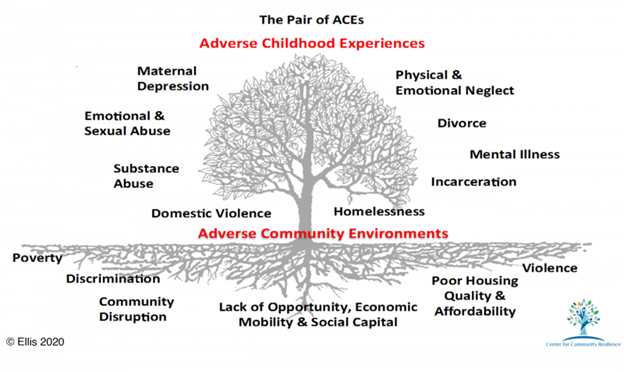What is adversity?
What is family adversity?
Family adversity broadly refers to a wide range of circumstances or events that pose a serious threat to a child’s physical and/or psychological wellbeing (Kalmakis and Chandler 2014). These adversities may fall within adverse childhood experiences (ACEs) or more generally as broader social determinants.
Adverse childhood experiences (ACEs) can include childhood maltreatment (e.g., physical, verbal, or sexual abuse) and household dysfunction (e.g., parental mental illness, family substance abuse) (Kessler et al. 2010). ACEs intersect with the broader social determinants focusing on where children and families live, work and play, and include community dysfunction (e.g., witnessing physical violence, discrimination) and peer dysfunction (e.g., stealing, bullying) as well as socio-economic deprivation (Karatekin and Hill 2019).
Family adversity has established adverse impacts on the health and wellbeing of families and their children across the life course. It increases the lifetime risk of anxiety, depression, suicidality, obesity, cancer, heart disease, etc. (Sahle et al., 2021, Hughes et al., 2017, Shonkoff et al., 2012).
Reducing the impacts of family adversity as early in life as possible is a priority public health issue to help children and families thrive.

What's the evidence?



















